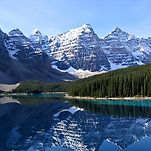<div class="figure-img" data-ke-type="image" data-ke-style="alignCenter" data-ke-mobilestyle="widthOrigin"><img src="https://t1.daumcdn.net/cafeattach/1WdXn/41a272fd2b46dc670b87b82a88b793d90a60fdc1" class="txc-image" data-img-src="https://t1.daumcdn.net/cafeattach/1WdXn/41a272fd2b46dc670b87b82a88b793d90a60fdc1" data-origin-width="220" data-origin-height="165"></div><p>-&#160;백상아리&#160;Shark,&#160;White <br>.&#160;학명;&#160;Carcharodon&#160;carcharias <br>.&#160;서식지;&#160;따뜻한&#160;물의&#160;얕은&#160;연안 <br>.&#160;통명;&#160;백상아리 <br>.&#160;특징;&#160;세계에서&#160;가장&#160;큰&#160;포식성&#160;물고기로&#160;바다의&#160;최상위&#160;포식자 <br>.&#160;먹이와&#160;요리법;&#160;비공해지역에서는&#160;회로도&#160;먹지만&#160;대부분&#160;훈제,&#160;구이&#160;등&#160;일반적인&#160;조리로&#160;섭취 <br>1&#160;학명과&#160;서식지 <br>-&#160;학명;&#160;Carcharodon&#160;carcharias <br>-&#160;서식지 <br>.&#160;온도와&#160;깊이;&#160;따뜻한&#160;물의&#160;얕은&#160;연안 <br>.&#160;지역;&#160;전세계&#160;해역&#160; <br>Although&#160;a&#160;relatively&#160;uncommon&#160;deep-water&#160;fish,&#160;the&#160;white&#160;shark&#160;occasionally&#160;enters&#160;shallow&#160;waters&#160;and&#160;will&#160;attack,&#160;without&#160;provocation,&#160;humans&#160;and&#160;small&#160;boats&#160;alike;&#160;because&#160;it&#160;often&#160;lingers&#160;near&#160;islands&#160;and&#160;offshore&#160;colonies&#160;of&#160;seals&#160;and&#160;sea&#160;lions,&#160;which&#160;are&#160;some&#160;of&#160;its&#160;preferred&#160;foods,&#160;it&#160;is&#160;thought&#160;that&#160;some&#160;attacks&#160;on&#160;humans&#160;occur&#160;because&#160;the&#160;white&#160;shark&#160;mistakes&#160;divers&#160;or&#160;surfers&#160;in&#160;wet&#160;suits&#160;for&#160;seals. <br>2&#160;통명 <br>-&#160;영어;&#160;white&#160;pointer,&#160;white&#160;death,&#160;man-eater,&#160;great&#160;white&#160;shark. <br>-&#160;한글;&#160;백상아리,&#160;악상어목&#160;악상어과 <br>3&#160;개요 <br>-&#160;길이;&#160;900센티&#160;이내,&#160;평균&#160;380센티 <br>-&#160;무게;&#160;2800파운드이내,&#160;평균&#160;2000파운드 <br>It&#160;is&#160;undoubtedly&#160;the&#160;most&#160;dangerous&#160;shark,&#160;due&#160;to&#160;a&#160;combination&#160;of&#160;size,&#160;strength,&#160;ability,&#160;and&#160;disposition&#160;to&#160;attack&#160;and&#160;because&#160;of&#160;the&#160;many&#160;recorded&#160;attacks&#160;that&#160;have&#160;taken&#160;place&#160;in&#160;the&#160;twentieth&#160;century. <br>4&#160;특징 <br>-&#160;세계에서&#160;가장&#160;큰&#160;포식성&#160;물고기로&#160;바다의&#160;최상위&#160;포식자 <br>-&#160;죠스에서&#160;인간을&#160;공격하여&#160;죽이는&#160;악명을&#160;가지고&#160;있으나&#160;먹지는&#160;않음 <br>-&#160;다른&#160;연골어류처럼&#160;직진만&#160;가능하므로&#160;공격시&#160;뒤쪽으로&#160;회피가&#160;유리 <br>-&#160;부레가&#160;없어&#160;간에&#160;지방을&#160;저장하여&#160;부력을&#160;다소&#160;확보했으나&#160;전진하지않으면&#160;가라앉음 <br>-&#160;전기수용체는&#160;물론&#160;청력이&#160;뛰어나&#160;1.6키로밖의&#160;이동소음도&#160;청취하여&#160;사냥에&#160;활용 <br>-&#160;보다&#160;많은&#160;산소를&#160;위해&#160;아가미에&#160;물을&#160;많이&#160;보내려는&#160;목적으로&#160;입을&#160;벌린채로&#160;헤엄 <br>Growing&#160;to&#160;26&#160;feet&#160;but&#160;usually&#160;less&#160;than&#160;16&#160;feet&#160;in&#160;length,&#160;the&#160;white&#160;shark&#160;has&#160;a&#160;stout,&#160;heavy&#160;body&#160;that&#160;may&#160;be&#160;a&#160;dull&#160;slate&#160;blue,&#160;grayish-brown,&#160;or&#160;almost&#160;black&#160;above,&#160;turning&#160;dirty&#160;white&#160;below.&#160;There&#160;are&#160;black&#160;edges&#160;on&#160;the&#160;pectoral&#160;fins,&#160;and&#160;often&#160;there&#160;is&#160;a&#160;black&#160;oval&#160;blotch&#160;on&#160;the&#160;body&#160;just&#160;above&#160;or&#160;behind&#160;the&#160;fins. <br>5&#160;먹이와&#160;요리법 <br>-&#160;먹이;&#160;전갱이,&#160;방어,&#160;참치,&#160;가다랭이,&#160;꽁치,&#160;고등어,&#160;갈치,&#160;멸치를&#160;선호하나&#160;닥치는대로&#160;포식 <br>-&#160;위장에서&#160;소화되지않는&#160;폐타이어,&#160;깡통,&#160;맥주병&#160;등도&#160;발견 <br>-&#160;난태생으로&#160;3년마다&#160;11개월의&#160;임신후&#160;5마리의&#160;새끼를&#160;출산 <br>-&#160;부화된&#160;치어는&#160;자궁에서&#160;수정란을&#160;먹으면서&#160;성장 <br>-&#160;이빨과&#160;턱뼈를&#160;위한&#160;어획과&#160;낚시로&#160;멸종위기여서&#160;수출에&#160;허가필요 <br>-&#160;비공해지역에서는&#160;회로도&#160;먹지만&#160;대부분&#160;훈제,&#160;구이&#160;등&#160;일반적인&#160;조리로&#160;섭취 <br>The&#160;large&#160;head&#160;ends&#160;in&#160;a&#160;point&#160;at&#160;the&#160;conical&#160;snout,&#160;which&#160;accounts&#160;for&#160;the&#160;name&#160;“white&#160;pointer.”&#160;There&#160;is&#160;a&#160;large,&#160;distinct,&#160;flattened&#160;keel&#160;on&#160;either&#160;side&#160;of&#160;the&#160;caudal&#160;peduncle&#160;and&#160;a&#160;greatly&#160;reduced&#160;second&#160;dorsal&#160;fin.&#160;A&#160;distinguishing&#160;feature&#160;is&#160;its&#160;set&#160;of&#160;large&#160;triangular&#160;teeth&#160;with&#160;sharp,&#160;serrated&#160;cutting&#160;edges. <br>Most&#160;whites&#160;are&#160;found&#160;in&#160;temperate&#160;or&#160;even&#160;cool&#160;waters&#160;worldwide&#160;and&#160;close&#160;to&#160;a&#160;source&#160;of&#160;the&#160;marine&#160;mammals&#160;they&#160;prefer&#160;to&#160;eat,&#160;after&#160;growing&#160;to&#160;large&#160;sizes.&#160;Actually,&#160;there&#160;are&#160;two&#160;much&#160;larger&#160;sharks,&#160;the&#160;basking&#160;shark&#160;of&#160;the&#160;North&#160;Atlantic&#160;and&#160;the&#160;whale&#160;shark&#160;of&#160;the&#160;tropics,&#160;but&#160;these&#160;are&#160;harmless&#160;plankton&#160;feeders. <br>The&#160;white&#160;shark&#160;record&#8212;2,664&#160;pounds&#160;off&#160;South&#160;Australia&#160;in&#160;1959&#8212;continues&#160;to&#160;be&#160;recognized&#160;by&#160;the&#160;IGFA,&#160;although&#160;a&#160;much&#160;larger&#160;17-foot&#160;specimen&#160;of&#160;3,427&#160;pounds&#160;was&#160;caught&#160;on&#160;August&#160;6,&#160;1986. </p>
<!-- -->
카페 게시글
음식
- 백상아리 Shark, White
박대선
추천 0
조회 9
23.08.08 17:25
댓글 0
다음검색



